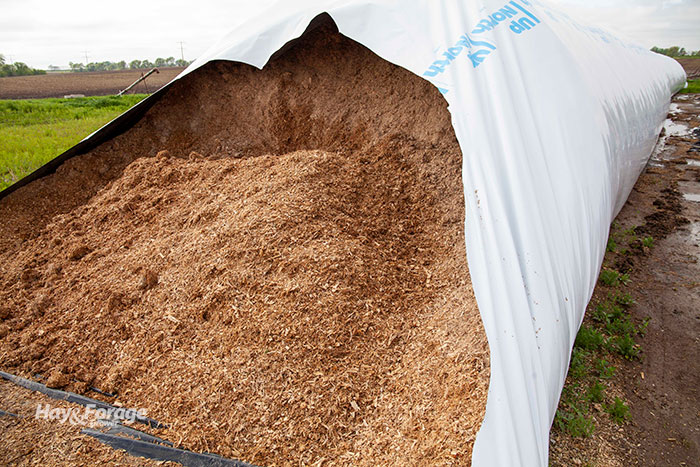Find a cold day to move silage |
| By Mike Rankin, Managing Editor |
|
|
 Silage and haylage are always best preserved when they never see Two Men and a Truck — or two farmers, a skid loader, and a truck. Once ensiled and fermented, the introduction of air into the feed mass begins a chain reaction of yeast dancing that never yields good results. However, there are situations where silage needs to be moved and re-ensiled from one storage structure to another. Time is running out to do this with any hope for success. Whenever silage is moved, there is always a risk of additional dry matter loss and spoilage. That’s especially the case when temperatures begin to warm up in spring and summer. Corn silage and cereal forages are most prone to heating during silage transfer because of their inherent high levels of yeast and available sugar. Grass or legume silages are also prone to deterioration after transfer, especially if the initial fermentation was incomplete. Eliminate air There are two keys to making a silage transfer successful. The first is to do it from late fall to early spring when temperatures are cool. The second is to exclude oxygen as quickly and completely as possible once the silage is moved. If silage is going to be moved and stored in a bunker silo or on a pile, high-density packing will be needed to eliminate any air pockets. Experts also recommend to cover the silage with an oxygen-barrier plastic. Make sure to eliminate any air pockets between the feed and plastic. Some farmers have used a shop vacuum to “suck out” any remaining air. If silage is going into a silo bag, make sure the silage is packed tightly and the bag is properly sealed. Again, a shop vacuum can be used to suck out any excess oxygen. For worst-case scenarios If there is concern that the moved silage will spoil because of high temperatures or initial poor silage quality, the use of an organic acid such as a buffered propionic acid product can be applied at the rate of 4 pounds per ton. Organic acids are strong antifungal agents. Inoculants will be of little value because the silage has already gone through a fermentation. In situations where it is known that silage will have to be moved from one structure to another, inoculating the feed with a Lactobacillus buchneri-based inoculant at the time of ensiling will aid in aerobic stability during transfer and subsequent feedout. L. buchneri favors the production of acetic acid, which is effective in controlling yeast growth. Moving silage for further long-term storage is never an ideal scenario; however, some advanced planning as to when and how the silage will be transferred can improve the odds for success. Transferred silage needs to be fed out as quickly as possible, preferably in cold weather. Remove sufficient amounts each day to keep the feedout face cool.
|
